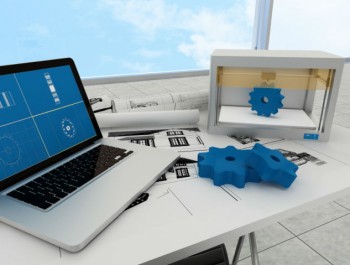Early 3D construction printing was a rather rudimentary process, producing rough-looking objects that seemed to be more like toys than useful items. However, the technology behind 3D printing has advanced significantly, and currently the process seems poised to make extraordinary advances possible in areas such as medicine, engineering, and design. 3D printing in the global construction industry appears to be ready to make equally important strides forward.

The typical view of 3D printing involves a large-sized printer that, guided by a computer, lays down layer after layer of polymer to create a full-size object that can be used in a practical application. Automotive parts can be 3D printed, for example, and new advances suggest that 3D printing could be an important part of building structures used for medical treatments. Designs and concepts can be easily prototyped and turned into tangible objects for testing and evaluation.
In the construction industry, however, 3D printing is progressing on a much larger scale, to the point of 3D printing of houses, structures, and building components.
3D printing in the global construction industry uses enormous printers that can produce entire walls or other segments at a time. It uses a mixture of concrete and composite that is thicker and stronger than regular concrete, resulting in pieces that are self-supporting as the concrete sets.
Other benefits of 3D printing in the industry include:
- Costs are generally much lower than with other construction processes.
- Projects can be finished extremely quickly. A Chinese company has reported finishing 10 houses in a single day.
- Construction components can be printed hollow, which reduces construction material use and creating space for infrastructure such as wiring or pipes.
- Waste is reduced 30 to 60 percent.
- Labor costs are reduced 50 to 80 percent.
Our company provides the most up-to-day guidance on important trends and developments in the construction industry and associated trades. Contact us at Construction Monitor today for more information on 3D printing in the construction industry and how it can become one of the most valuable tools in your design and development toolbox.

